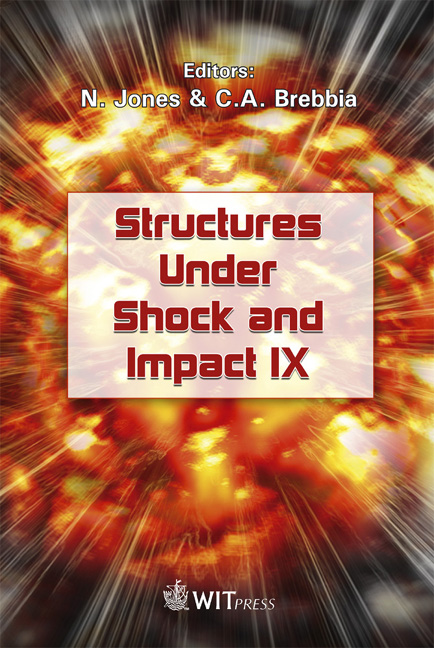An Investigation Of The Dynamic Behavior Of 3-D Four Direction Carbon-fibers/epoxy Braid Composites At Various Strain Rates
Price
Free (open access)
Transaction
Volume
87
Pages
10
Published
2006
Size
533 kb
Paper DOI
10.2495/SU060121
Copyright
WIT Press
Author(s)
B. J. Pang, Z. H. Tan, B. Jia & B. Z. Gai
Abstract
The 3-D four-direction braid carbon/epoxy composites have been tested in compression under quasi-static loading and high strain rate loading. And the tests were conducted at strain rates up to 2000/s by split Hopkinson pressure bar (SHPB) and MTS in the paper. The loading pulses in split Hopkinson pressure bar apparatus were modified by pulse shaping techniques such that the samples are in dynamic stress equilibrium and deformed at a nearly constant strain rate over most of the dynamic compression duration. The results indicated that the peak stress and stiffness along the transverse direction were larger than those along the thickness direction. In addition the effect of the strain rate on peak stress and the stiffness was also discussed in the paper. Keywords: SHPB, braid composite material, high strain rates, pulse shaper. 1 Introduction Composites have applied in the field of aerospace, civil engineering, marine and automobile industries due to their high strength and specific stiffness. Many of the applications of composite materials involve dynamic loading during their service life such as the projectile impact on composite armour. Materials and structures response vary significantly between dynamic loading and quasi-static loading [1-4]. Reliable experimental data under the dynamic loading ensures the safety over the ranges of their applications. The 3-D braid composite is so-called the third generation composite material compared with the 2-D laminates [5, 6]. 2-D laminates often deformed delaminates when it is suffered the impact
Keywords
SHPB, braid composite material, high strain rates, pulse shaper.





